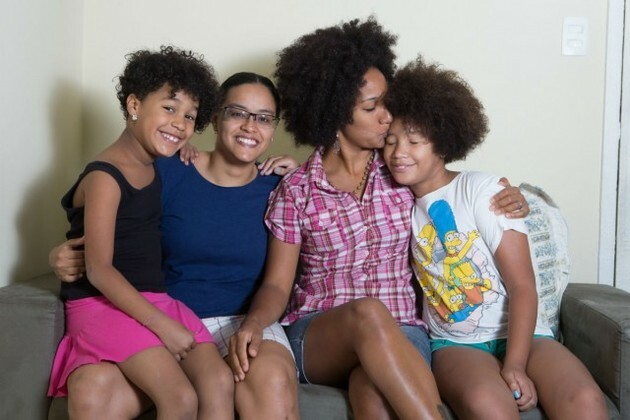THE contemporary family is characterized by the multiplicity of arrangements between adults and children.
In the 21st century, new types of family are being legally and socially recognized, such as the single-parent or same-sex family.
Types of Family

In the Western world, the Roman family model was spreading throughout Europe.
Thus, the notion of a family consisting of a man and a woman who bore biological children or who adopted when they did not have them persisted throughout Antiquity.
Christianity consecrated this model by elevating marriage to the indispensable condition for generating children who could receive a name and access the family inheritance.
Modernity and Enlightenment will reinforce the ideal of romantic love inherited from the Middle Ages. In this way, the nuclear family and unconditional maternal love begin to be valued.
With the social demands experienced throughout the 20th century, this institution will undergo several changes.
From breaking the taboo of divorced couples to discussing whether same-sex couples can adopt children, the contemporary family is characterized by a multiplicity of typologies.
Let's look at some examples of contemporary family:
Nuclear family
The nuclear family is defined by two adults, male and female, with or without biological children. This composition does not include other relatives such as grandparents, uncles and cousins.
Reconstituted or recomposed family
The reconstituted family is also called recomposed by some authors.
It is a family that consists of two adults and children who are not always the biological children of this couple.
Thus, this family includes the biological children of one of the parents and possibly the biological children (or not) of these adults who have joined.
single parent family
Formed only by an adult, either the father or the mother, who is responsible for underage children.
homo-parental or homo-affective family

Composed of two adults of the same sex and who have biological children or not.
Interracial family and intercultural family
With immigration and transport facilities, there is more opportunity to meet people outside your cultural and ethnic group.
In this way, couples from different cultures arise, who will have biological children or not, and who will be educated in different customs and, at times, different languages.
family in Brazil

As in the entire Western world, the Brazilian family is also undergoing changes in its configuration.
The greater education of women, their entry into the labor market and the drop in the number of children, changed family arrangements.
The Brazilian family was characterized by the union of man and woman. However, in the colonial period, there are many cases of mancebia, of children begotten by enslaved or Indian black women, and also of mothers who had to take care of their offspring alone.
In the 21st century, the demand for the rights of LGBT communities and the visibility achieved by parents and mothers who raise their children alone, made the Public Power give new answers to the family's demands Brazilian.
Look at some numbers of the Brazilian family according to IBGE statistics for 2015:
| fertility rate per woman | 1,9 |
|---|---|
| single parent families | 15,7% |
| Single mothers | 26,8% |
| single parents | 3,6%. |
| homo-affective couples | 60 thousand* |
| couples without children | 20,2% |
*There are no official data, but it is estimated that 20% of same-sex couples have children in Brazil.
See too: Family: concept, evolution and types
Origin of the Family
The union between adults to procreate is observed in all cultures around the world.
However, not all human societies view this arrangement in the same way. There are cultures that admit only one couple, others that allow a man to have more than one wife.
On the other hand, there are customs that dictate that the mother of one of the spouses must live in the same house and others that make the woman leave her family to form another one.
The formations are multiple and adapted according to the historical context in which they were inserted.
Study more with these texts:
- community and society
- Social Institutions
- Sociology in Enem: what to study

